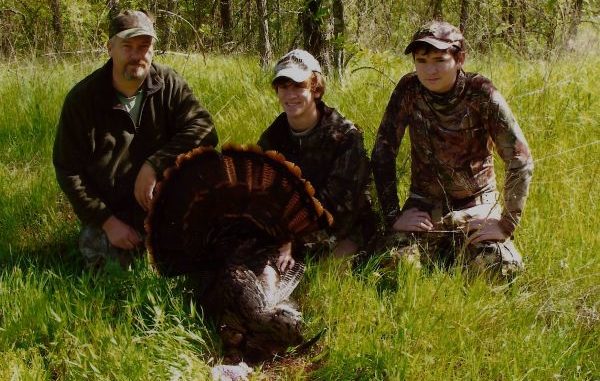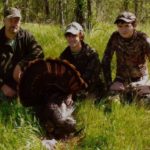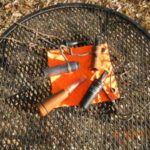
It is generally a good idea to go out and scout for turkeys prior to the season opening. The excellent mast crop this year no doubt kept the birds in the creek and river drainages where the hardwoods are.
I noticed the group of hens frequenting our property totally disappeared from October through December, but they began showing up in January, visiting the clover strips and pine trees that had produced an abundance of pine seeds.
This excellent mast crop will help hens and toms be in good physical condition, and perhaps we will have a good nesting season — should weather conditions be conducive during the nesting and brood-rearing periods.
Droppings, tracks and scratching of leaves is evidence turkeys are in an area. Most hunters also will go out in the early mornings and listen for gobbling from roosts.
The seasoned hunter will advise not to do any calling when scouting. No need to educate the toms before the actual hunting begins; it is challenging enough as it is to call up an adult gobbler.
Once some toms are located, the hunter generally arrives in the area before dawn and moves in as turkeys begin to gobble, sets up and tries to lure a tom to him.
This is contrary to normal turkey biology because the hen usually comes to the gobbler.
If the setup does not work, the hunter moves to where other toms were gobbling and tries again.
On large tracts of land with good turkey populations, running and gunning is probably the normal method of hunting. The hunter might also opt to go to areas where turkeys have been seen — generally, areas where hens were feeding because where the hens go the toms will also go.
On national forest land, hunters will often travel forest roads, stopping and listening for turkeys, and then moving in once a tom is located.
If the toms have the lockjaw and are not sounding off, a locator call such as a crow call, owl hooter or woodpecker call might get them to gobble. Gobblers will gobble at a variety of man-made sounds.
Once you know where a tom is roosted or where on the ground it is gobbling, there is no need to keep crowing or hooting at him just to make him gobble.
My turkey hunting is generally restricted to small tracts of land, and the luxury of being able to run and gun is not possible.
In his two turkey books, the late Kenny Morgan talks about the importance of observation and patience.
Observing turkeys during the deer season is a great way to locate birds and identify their travel patterns.
I have tried to make our property as attractive to turkeys as possible so birds will visit on a regular basis. Turkeys can travel long distances during the day (which is why it is almost impossible to eat a wild turkey drumstick).
So maintaining excellent nesting and brood-rearing habitat, along with planting turkey forages for all the seasons, will help attract turkeys to your land.
Clover is an excellent food crop for turkeys in the spring, and it is best to incorporate this into your fall and winter plantings. Chufa is a crop that will attract the turkeys, but it will also bring in the pigs.
Bens Creek was a good turkey area primarily because of all the chufa plantings that LDWF did on the area.




